I decided to choose Woman Holding a Balance because it is probably one of Vermeer’s most harmonious and peaceful paintings, and because it conceals many curiosities, secrets and symbols. The work of art has received many other names, as Woman Weighing Gold, Woman Testing a Balance and Woman Weighing Pearls. The reason why it has got so many different names is that, although at first experts thought the portrayed woman was weighing some kind of precious material, later X-rays and microscopic examination proved that the balance she is holding is actually empty, and this aroused a great controversy. There are different opinions about the theme and symbolism of the work of art, as the woman is viewed as a symbol of holiness and earthiness.
This composition is thought to have been made between the years 1662 and 1665. The material Vermeer used is oil on canvas and its size is pretty small (42.5 x 38 cm) if compared with the idea I had of the painting. Currently, the piece is located at The National Gallery in Washington DC.
In the painting, we can see a young woman, seemingly pregnant, who is holding a balance before a table where there are three containers like an open box of jewelry, and some pearls and gold coming out of it. There is a blue cloth in the left foreground, as well as a curtain and a window through which light enters the scene. We can see a little mirror in the wall that is just in front of the woman and a picture of the Last Judgment scene in the wall right behind her.
The origins of this work have been traditionally linked to the also Dutch artist Pieter de Hooch, whose painting Gold Weigher matches Vermeer’s picture very closely. Since neither of the paintings are dated accurately and since both artists were contemporary, “who influenced who” has been a subject of debate for critics. It seems that de Hooch was living and working in Amsterdam but lived in Delft for some years, so it is very likely that the two artists met and exchanged ideas. However, it seems that de Hooch’s Gold Weigher originally had a male figure in the scene, which later was erased by the artist himself. If this were true, the paintings would not look so alike.
Regarding the woman’s appearance, the same white cap that she is wearing was represented by the artist in other paintings too, both tied and opened. According to Dutch costume experts, the cap was partly ornamental and it served to protect the hairdo; it was typically made of white linen, sometimes of nettlecloth and cotton.
One of the greatest mysteries is who posed for the young lady in the painting. Maybe because of the intimate nature that Vermeer’s paintings usually have, there has been a tendency to link the painter’s family members to the sitters of his paintings, some of whom seem to have posed for him more than once. This makes a lot of sense, for employing professional models at the time was very expensive. Most people believe the woman holding the balance is his wife Catharina, who apparently also posed for The Girl Reading a Letter by an Open Window and Woman in Blue Reading a Letter.
To modern viewers, it looks quite obvious that the woman is pregnant but, according to experts, pregnancy was not a common subject in art and there were actually very few depictions of women in maternity clothes. Even in religious paintings such as the Visitation, where depictions of pregnant women were required, the bodies were usually completely hidden by draperies. In addition, apparently, Dutch fashion in the 17th century encouraged bulky silhouettes.
The two most important elements of Woman Holding a Balance are, no doubt, the picture-within-the-picture and the balance. The picture-within-the-picture shows the Biblical scene of the Last Judgment –the final eternal judgment of every nation by God, where he decides which souls will go to Heaven and which souls will go to Hell. The artist of the painting remains an enigma, but he is thought to be Jacob de Backer, as Vermeer was an art dealer and he was thought to have a similar painting in his possession. A detail that gives evidence to the fact that Backer’s work was a model to Vermeer is that Christ is depicted with both hands raised and outstretched, which is not very common in the depictions of the Last Judgment.
Another interesting element of the work of art is the mirror, which appears four times in Vermeer’s whole oeuvre. Iconographic associations to mirrors are numerous; for instance, sometimes they represent pride, other times vanity, prudence, self-knowledge, and truth. It seems that the mirror in this painting is the same as the one in Woman with a Pearl Necklace, as both are said to be of the same size and presumably made out of ebony. Painters depicting someone gazing into a mirror often also show the person’s reflection, although this is not the case, as we see the mirror from the profile. This is a kind of abstraction, as in most cases the angle of view is such that the person’s reflection should not be visible.
On the other hand, the balance the woman is holding is probably very closely connected to the idea of judgment and the Weighing of the Souls, so Vermeer clearly wants the viewer to see the link between the picture-within-the-picture and the balance. Besides, scales were really important at that time in order to prevent fraud; it was necessary to keep a constant check not only on the amount of goods one had, but also on coins.
The curtain seems to be very similar to the one in Woman with a Pearl Necklace, but warmer in tone. The same yellowish color is used in the two golden stripes in the frame of the Last Judgment picture, as well as in the woman’s dress. One should also pay attention to the stained glass window that was so typical of the period and that the painter used in many other paintings.
In addition, the wooden extendable table seen in the painting appears to be the same as the one Vermeer used in other interiors. This kind of table was considered a luxury item in Dutch painting of the time. The legs have a beautiful bulbous form, and in the 17th century, this piece of furniture was known as a draw-leaf table –because it could be extended by pulling out extra leaves.
The floor tiles are also worth taking into account, as they are the typical black and white chess-like tiles that Vermeer often used. Likewise, Cornelis de Mann, who was also contemporary to Vermeer, depicted the same table and the same floor tiles in his works.
To sum up, it is well worth noting that Woman Holding a Balance is one of Vermeer’s most interesting and mysterious paintings, due to its great symbolism and its several possible interpretations. I will go posting additional information about the painting in order to make the overall study of the work as complete as possible. For more information, I leave my Powerpoint presentation here:
References:
- Wikipedia, Woman Holding a Balance. Retrieved 13:28, April 15, 2011 from http://en.wikipedia.org/wiki/Woman_Holding_a_Balance
- National Gallery of Art, Woman Holding a Balance, a Moment Captured. Retrieved 17:32, April 20, 2011 from http://www.nga.gov/feature/vermeer/moment1.shtm
- Essential Vermeer, Woman Holding a Balance. Retrieved 20:13, May 1, 2011 from http://www.essentialvermeer.com/
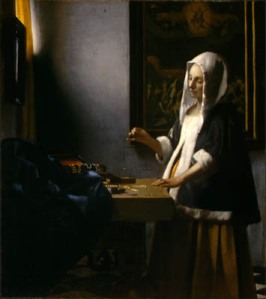
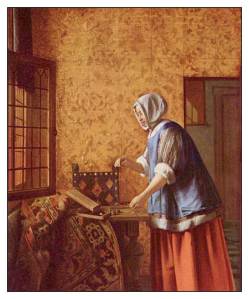

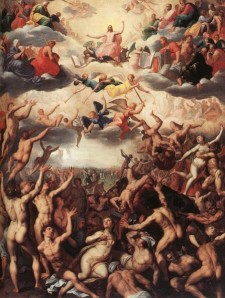
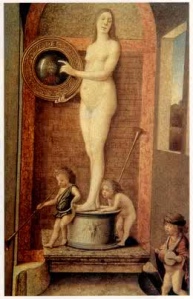
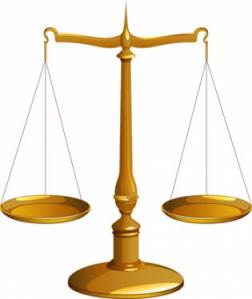
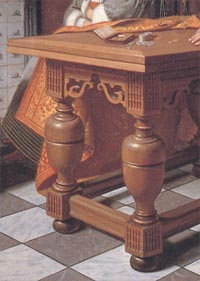
Thank You sooo much for this article!! It helped me with a history project for art class!! 🙂